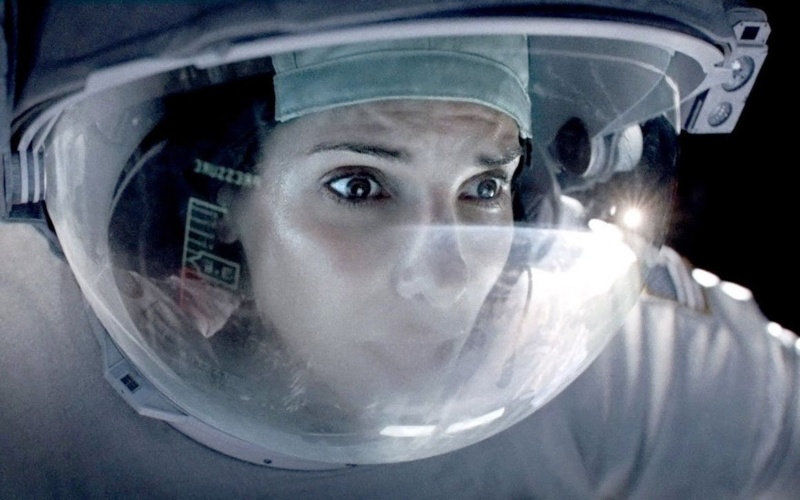Imagine you are a biomedical engineer. You are sent on a mission to service the Hubble Space Telescope.
While on a spacewalk, some debris from a blown-up defunct satellite hits the Hubble Telescope and you get separated from the ship. Another astronaut uses his thrusters to get to you and connects a tether to your suit with seconds to spare.
Is your heart pumping yet? Probably not. But if you watched Gravity (2013) in the cinema or Imax, you probably remember the tension you felt as Sandra Bullock tries to get her bearings. I remember walking out of that movie completely exhausted, feeling as if I was the one that was flung around in space.
Gravity was a marvel of the cinematic experience. They used all the tricks in the book to get you engaged – from extreme close-ups of the actors’ faces to get the mirror neurons firing, to point-of-view shots from their perspective to create disorientation, to hearing their racing heartbeats over the oppressing silence of space.
I recently watched the movie again on an airplane, and it was just not the same. It was still a great movie, but it was far from the immersive experience that I had in the cinema. Having a screen that fills your field of vision and booming high-quality sound really adds to the experience.
Virtual Reality for beginners
Virtual reality tries to take this one step further. The VR headset you wear not only fills your field of vision when you look forward, it actually fills all 360 degrees of motion in all directions. And as an added bonus, it tricks your eyes to see the picture in 3D.
However, the funny-looking goggles do more than make you look like a futuristic scuba diver: it has two small screens – one for each eye – each showing a slightly different picture. It’s like a 3D movie but in every direction. The headset also has a gyroscope that tracks how you move your head, making it seem like you’re looking around in a virtual world.
This technology is in its infancy, but anyone that has tried even the most basic version would see that it has great potential for creating an even more immersive experience than current forms of entertainment.
Recently, both Netflix and HBO have launched apps to watch VR movies, but this is a bit of a cop-out: The apps only strive to provide a cinema-like experience, rather than showcasing real VR movies. Basically, with the app you can sit in your living room and pretend you’re in someone else’s living room, watching Netflix. In terms of bona fide VR movies, there are some interesting short films on YouTube (and of course a lot of porn), but Hollywood is still slow on the uptake of major VR films.
The reasons for this are two-fold: firstly, only the nerdiest nerds have VR headsets that are more than just a smartphone in a box, so your potential audience is still very small. Secondly, if you thought to make a movie for a ‘flat’ screen was expensive, wait until you see what it costs to make a movie that plays in all directions.
Luckily the industry is booming, with new camera technology being developed daily to help curb expenses, but it’s going to be a while until we get a VR blockbuster.
Demo of the HTC Vive, a cutting-edge virtual reality headset.
When it goes mainstream, however, rest assured pirates will be as ready as ever. Major pirate sites already have VR categories, mostly populated with porn at the moment. Given the massive cost involved in making these films, the potential losses due to piracy are expected to be substantial.
There are already attempts to lock content into specific platforms with copy protection, but this is expected to be as ineffective as in the film industry. Without a single dominant device in the market, this tactic will split the already small market.
Forward-thinking content and device developers are realising that open and cross-platform standards are the way to go.
The Custos solution to protecting Virtual Reality content
Custos’ cutting-edge technology can provide just that: effective protection of virtual reality content that slots into the open cross-platform standards, and works on any device. As with our video protection, the blockchain tracking technology will be embedded into the analogue content of the VR media, making it robust against re-encoding and copying.
The Custos technology has 3 components:
- Distribution
- Watermarking
- Blockchain tracking
Tracking content using the blockchain is our core technology, our x-factor. It is the component that makes our approach more effective than normal forensic watermarking.
With a product like Screener Copy, which is aimed at independent filmmakers and distributors, Custos provides all three these components within a one-click distribution platform that includes cutting edge in-house forensic watermarking and our blockchain tracking.
On the other hand, in the eBook space, the British distributor Erudition Digital uses their own distribution platform as well as third-party watermarking. The only service we provide is the blockchain tracking through an API.
This same API can work for VR media. In-house VR watermarking is currently in an early development stage.
If you are interested in learning how you could integrate with the Custos core technology for VR or any other media, please contact us.



